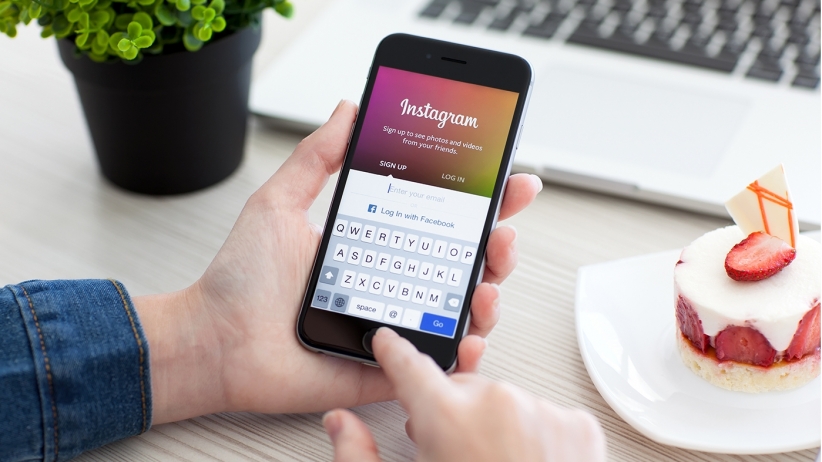Instagram recently dropped the news that it will be adapting a non-chronological newsfeed order, similar to its big brother, Facebook. Instead of sorting posts in a familiar linear order, the new algorithm will weigh in a variety of social signals, such as a number of post engagements. It will also consider content you liked before in an attempt to sort images in the order of “relevancy,” or as what Instagram perceives to be of most interest to you.
Instagram has already carved out its place among top networks for businesses, thanks to its almost exponential growth. What started as a teen photo-sharing app bought by Facebook in then-incredible $1 billion deal, the network is projected to rack in $1.86 billion in revenue this year as its user base growth outpaces general social network usage.
The update, however, has caused a storm of complains. It went as far as to prompt a petition on Change.org asking Instagram to leave its chronological feed alone. The outrage was mostly caused by comparing this change to Facebook’s algorithm. Notorious for discriminating business pages’ content, it upset many business owners when organic post reach plunged to unbelievable lows. In a lot of cases, Instagram was their network of choice because of its chronological order and an unlimited reach of posts.
However, the comparison of the two networks is unfair. Unlike Facebook, Instagram does not separate “personal” from “business” accounts. As of right now, a profile is a profile, independently of its use. So, this move is not discriminatory of businesses (I am looking at you, Facebook).
So let’s examine what this change in algorithm really means and whether it’s as scary as it looks to marketers.
Chronological newsfeed was truly effective only in two instances: businesses posted to Instagram every half an hour or their followers had a very limited number of handles they followed. This cannot be a widespread trend, because according to Optical Cortex data based on 20,000+ Instagram users, average number of people they follow is 822. So, for a majority of brand’s following those images most likely weren’t the first thing they saw; and that chronological order didn’t really matter anyway.
Now what really made a difference, and still will continue to do so, is getting ahead of the game with smart strategies. What you have (to continue) to do as a smart marketer is to focus on quality content that drives engagement.
Instagram was so gracious to let marketers know of its algorithm change before it kicked in. Use the little time that’s left with chronological newsfeed to jumpstart your new marketing strategy. Make an extra push to increase engagement now. Start to finally notice those comments people leave on your images! Respond to them! Use this as an opportunity to strike a conversation.
A lot of people who follow brands and celebrities will deliberately go to the handle to see what’s new. People follow Nike, Lexus or Kylie Jenner, because they know that each new post will be amazing (whatever their definition of amazing is). So, strive to make your Instagram account a mecca for striking visual content. This is the only way to ensure people won’t stop engaging with your content, whatever the algorithm is.
There are also a few other tactics you can employ to stay ahead of the curve. For example, if you are seriously using Instagram to grow your business, you already track and analyze results. You already know when your audience is online. You can still schedule your posts to go out at those times and increase visibility of fresh content.
Another reason to dive deep into analytics is to see which hashtags perform the best. Always test which hashtags improve engagement, always vary them to improve your odd of being discovered by a new group of people. Finally, constantly monitor trending hashtags (didn’t you already?) to see if any of the applicable and relevant hashtags are popular, giving you the opportunity to enjoy a remarkable rate of impressions. Yet, don’t go for an overkill. Don’t spam people with irrelevant content and thirty hashtags – that won’t increase your engagement or chances of being lovable.
Plus, while being strategic about your visual content (that has to rock their socks off), you should also become extremely strategic about your captions. It is proven that captions with a call to action are beyond effective in getting desired results. Do you want more engagement? Just ask for it! Foundr Magazine, for example, ends a lot of their captions with “double tap if you agree,” or “tag your friends.” What’s an easier way to gain numerous shares and an audience insight than to simply ask for their opinion?
Businesses that enjoy high engagement rates know their respective audiences very well. They know what type of imagery is catchy, what content needs to serve; and these companies have also figured out a context for consuming this content. They cater to their audience, so the latter wants to stick for the ride ahead.
Finally, don’t shy away from occasional boost. Employ the power of Facebook advertising capabilities on Instagram and target the right people.
So, after all, the change in algorithm might be for the better. If you post amazing content, it’ll be waiting for your followers in their newsfeed even if it was posted a few hours ago. Instagram user survey indicated that 60% of Instagrammers learn about products and services on the network and 75% take action after being inspired by an Instagram post. Now is the time to bring your A-game on.

H/T: Entrepreneur



